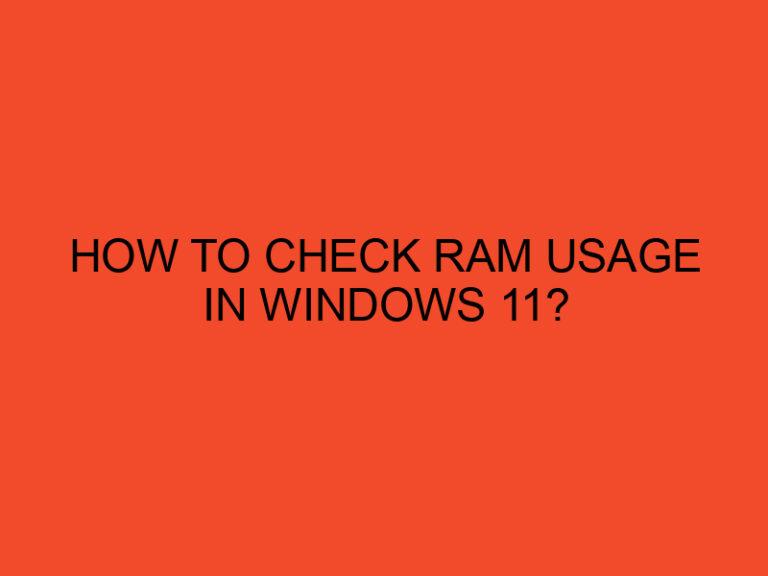Random Access Memory (RAM) is a vital component of any computer, enabling it to perform various tasks efficiently. To accommodate different RAM modules, motherboards come equipped with various RAM slot types. In this article, we will explore the different RAM slot types commonly found in modern computers.
Table of Contents
Exploring Different RAM Slot Types
DIMM is the most prevalent type of RAM slot used in desktop computers. These slots typically have a 64-bit data path and support various types of DDR (Double Data Rate) RAM, such as DDR3, DDR4, and DDR5. DIMMs are available in different capacities, ranging from 4GB to 128GB per module, making them suitable for both mainstream and high-performance computing needs.
SODIMM (Small Outline Dual In-Line Memory Module)
SODIMM slots are commonly found in laptops, mini PCs, and small form factor computers. Due to their smaller physical size, SODIMMs are more space-efficient and allow manufacturers to build compact devices. They are available in both DDR3 and DDR4 versions, offering a range of capacities from 4GB to 64GB per module. SODIMMs are a popular choice for laptops and other portable devices where space is limited.
SO-DIMM (Small Outline DIMM)
Sometimes confused with SODIMMs, SO-DIMMs are a slightly older form factor used in older laptops and specific industrial and embedded systems. They are physically smaller than standard DIMMs but larger than SODIMMs. SO-DIMMs are typically found in devices with height restrictions that cannot accommodate standard DIMMs.
Micro-DIMM
Micro-DIMMs are even smaller than SODIMMs and were mainly used in older ultra-portable laptops and some specialized devices. However, they are less common nowadays due to advancements in memory technology and the popularity of SODIMMs for small form factor devices.
RIMM (Rambus In-line Memory Module)
RIMMs were a proprietary memory technology developed by Rambus Inc. in the late 1990s and early 2000s. They were intended to be used with Rambus DRAM (RDRAM) memory, which promised high data transfer rates. However, RDRAM faced compatibility issues, and the high cost of RIMMs contributed to its limited adoption. RIMMs are now obsolete, and you are unlikely to encounter them in modern systems.
FB-DIMM (Fully Buffered DIMM)
FB-DIMMs were designed to address the limitations of traditional DIMMs in high-end servers and workstations. They featured an advanced buffering technology that allowed for greater memory capacity and reduced power consumption. However, FB-DIMMs were complex and expensive, and they have been replaced by more cost-effective memory solutions.
DIMM with ECC (Error-Correcting Code)
ECC DIMMs include additional error-correcting circuitry, which helps detect and correct memory errors. These modules are commonly used in servers, workstations, and critical systems where data integrity is paramount. ECC DIMMs are slightly more expensive than non-ECC DIMMs but offer greater reliability and stability, especially in mission-critical applications.
Conclusion
RAM slot types have evolved over the years to accommodate different memory technologies and form factors. The most common types include DIMM, SODIMM, and SO-DIMM, catering to various computer configurations and requirements. When upgrading or building a computer, it’s crucial to ensure that the RAM modules are compatible with the motherboard’s RAM slot type to achieve optimal performance. Understanding the different RAM slot types empowers users to make informed decisions when choosing the right memory for their computing needs.
FAQs
What is the difference between DIMM and SODIMM?
The main difference between DIMM (Dual In-Line Memory Module) and SODIMM (Small Outline Dual In-Line Memory Module) lies in their physical size and intended usage. DIMMs are larger and commonly used in desktop computers, while SODIMMs are smaller and typically found in laptops and compact devices. Both DIMMs and SODIMMs come in various capacities and support different types of RAM, such as DDR3, DDR4, and DDR5.
Can I use a DIMM in a laptop or a SODIMM in a desktop computer?
No, you cannot interchange DIMMs and SODIMMs between laptops and desktop computers. The physical size and pin configurations of DIMMs and SODIMMs are different, making them incompatible with each other’s respective slots. It’s essential to use the correct type of RAM for your specific device.
What is the benefit of using ECC RAM?
ECC (Error-Correcting Code) RAM includes additional error-detecting and correcting circuitry, which helps identify and fix memory errors. ECC RAM is commonly used in servers, workstations, and critical systems where data integrity is crucial. While ECC RAM is more expensive than standard RAM, it provides greater reliability and stability, making it suitable for mission-critical applications.
Are there any other types of RAM slot technologies?
Yes, there have been other RAM slot technologies, such as RIMM (Rambus In-line Memory Module) and FB-DIMM (Fully Buffered DIMM). However, these technologies are now outdated and rarely used in modern systems. The most common RAM slot types today are DIMM and SODIMM.
What is the maximum RAM capacity supported by my motherboard?
The maximum RAM capacity supported by a motherboard depends on its specific model and chipset. To find out the maximum RAM capacity of your motherboard, you can refer to the motherboard’s user manual or visit the manufacturer’s website. Additionally, some system information tools in the operating system can also display this information.





